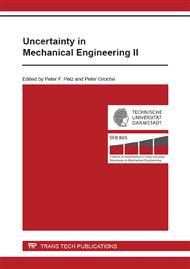[1]
B. Möslein-Tröppner, Produktionswirtschaftliche Flexibilität in Supply Chains mit hohen Absatzrisiken; University of Bamberg Press, Bamberg, (2010).
Google Scholar
[2]
R. Berger, Mastering Product Complexity, Roland Berger Strategy Consultants, Düsseldorf, (2012).
Google Scholar
[3]
D. Schmoeckel. Developments in Automation, Flexibilization and Control of Forming Machinery. CIRP Annals – Manufacturing Technology. 40/2 (1991) 615-622.
DOI: 10.1016/s0007-8506(07)61137-8
Google Scholar
[4]
G. Schuh, Zukunftsperspektive des deutschen Maschinenbaus, first ed., Apprimus, Aachen, (2012).
Google Scholar
[5]
R. Neugebauer, B. Denkena, K. Wegener, Mechatronic Systems for Machine Tools, CIRP Annals – Manufacturing Technology. 56/2 (2007) 657-686.
DOI: 10.1016/j.cirp.2007.10.007
Google Scholar
[6]
G. Pahl, W. Beitz, J. Feldhusen, K.H. Grote, Engineering Design, third ed., Springer, London, (2007).
Google Scholar
[7]
H. Haf, Plattformbildung als Strategie zur Kostensenkung. VDI Berichte 1645 (2001) 121-137.
Google Scholar
[8]
I. Baumgart, Modularisierung von Produkten im Anlagenbau; Rheinisch-Westfälische Technische Hochschule Aachen, Aachen, (2004).
DOI: 10.15420/ecr.2007.0.1.51
Google Scholar
[9]
G. Pahl, W. Beitz, J. Feldhusen, K.H. Grote, Konstruktionslehre, 8th ed., Springer, Berlin, (2013).
Google Scholar
[10]
P. Groche, M. Scheitza, M. Kraft, S. Schmitt, Increased total flexibility by 3D Servo Presses, CIRP Annals – Manufacturing Technology. 59/1 (2010) 267-270.
DOI: 10.1016/j.cirp.2010.03.013
Google Scholar
[11]
D. Gerwin, Manufacturing Flexibility: A Strategic Perspective, Managing Science. 39/4 (1993) 390-410.
Google Scholar
[12]
A. Bretz, S. Calmano, T. Gally, B. Götz, R. Platz, J. Würtenberger, Darstellung passive, semi-aktiver und aktiver Systeme auf Basis eines Prozessmodells (Representation of Passive, Semi-Active and Active Systems Based on a Prozess Model), unreleased paper by the SFB 805 on http: /www. sfb805. tu-darmstadt. de/media/sfb805/f_downloads/150310_AKIII_Definitionen_aktiv-passiv. pdf.
Google Scholar
[13]
B. Röder, C. Dietrich, H. Birkhofer, A. Bohn, Multidimensinal Systems of Concepts – An Approache for a better Communication in the Process of Requierement Aquisition, International Design Conference - Design 2012. (2012) 1091-1100.
Google Scholar


